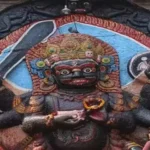
Hinduism is often described as both a religion and a way of life, reflecting its intricate and multifaceted nature. Originating in the Indian subcontinent over 4,000 years ago, this ancient belief system encompasses a rich tapestry of philosophies, rituals, and cultural practices that have evolved over millennia.
Hinduism as a Religion
As one of the world’s oldest religions, Hinduism boasts approximately 900 million adherents, making it the third-largest religion globally, after Christianity and Islam. Unlike many other religions, Hinduism lacks a single founder or central religious authority. Instead, it is defined by a diverse range of beliefs and practices that can vary significantly among its followers. Its sacred texts, including the Vedas, Upanishads, and epic narratives like the Mahabharata and Ramayana, serve as foundational scriptures, guiding its followers in spiritual and ethical matters.
The term “Hindu” is believed to have originated from the Indus River, evolving over time to denote the people and their practices. Practitioners often refer to their faith as Sanatana Dharma, or “eternal duty,” highlighting moral and ethical living as central to their way of life.
Hinduism as a Way of Life
Beyond its religious aspects, Hinduism is deeply embedded in the cultural and social fabric of Indian society. It shapes various customs, traditions, and practices that guide daily living, including rituals, festivals, dietary laws, and social responsibilities. The philosophy of karma, which suggests that one’s actions impact future lives, influences how Hindus approach their decisions and interactions.
Hinduism’s flexibility accommodates a broad spectrum of beliefs and practices, allowing for various spiritual paths. Many Hindus worship multiple deities while recognizing a singular ultimate reality, Brahman. This inclusivity fosters a sense of unity among followers, regardless of their specific practices.
The Concept of Dharma in Hinduism
Hinduism’s concept of dharma, or moral duty, is distinct in several key ways:
- Universality and Individualism: Dharma is seen as a universal truth and moral order sustaining the universe but is also highly individualistic. Each person’s moral duty varies based on circumstances, caste, life stage, and other factors. This contrasts with religions that prescribe a uniform set of rules for all followers.
- Encompassing Nature: Dharma guides every aspect of life, from rituals to social interactions to one’s occupation. Unlike religions that separate spiritual and secular realms, Hinduism integrates religion into all facets of life.
- Contextual Morality: Dharma is context-specific, with moral obligations differing based on caste, gender, age, and life stage. The Bhagavad Gita emphasizes, “Better one’s own dharma, though imperfect, than another’s dharma well-performed,” highlighting the importance of personal duty over a universal moral code.
- Hierarchy and Interdependence: Traditional Hindu society is organized by caste, each with its own dharma, seen as part of a cosmic order. Although hierarchical, there is also recognition of the interdependence of castes as parts of a whole, differing from egalitarian religions that reject social hierarchies.
Conclusion
In summary, Hinduism is both a religion and a way of life, integrating spiritual beliefs with daily practices and allowing for a rich diversity of expressions among its followers. Its lack of a singular doctrine or founder makes it unique, thriving on principles of tolerance and inclusivity. This enables individuals to define their own spiritual paths while remaining connected to a broader community.












